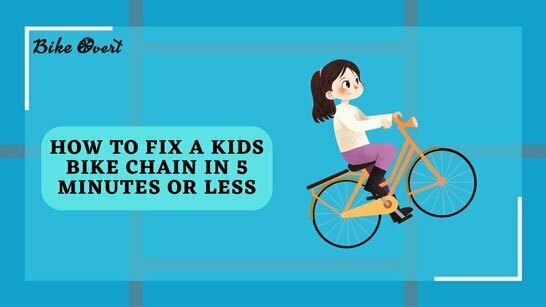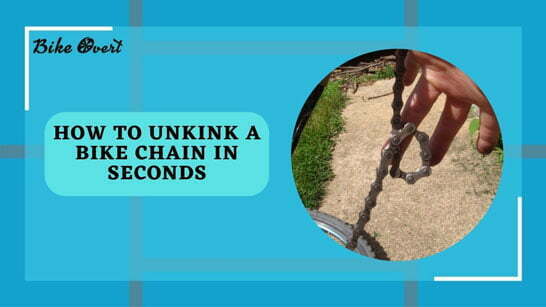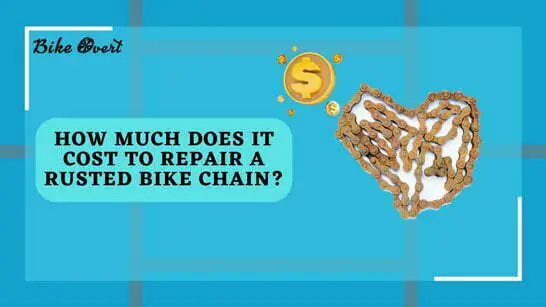Bike chain and cassette replacement cost. Why do you need to replace your bike chain? Should I replace the chain and cassette together?
Bike chains and cassettes can last for many years, but they eventually need to be replaced. When the time comes, there are a few things you need to know about the cost involved. Here is what you need to know about bike chain and cassette replacement costs:
-The average cost of a bike chain replacement is around $30.
-The average cost of a cassette replacement is around $50.
Bicycle chain and cassette wear occurs when the surfaces that make contact with the wheel are roughened or chip away. The friction between the wheel and these surfaces wears down the materials over time, which results in a loss of strength and durability. Continue to read to get a broad idea.
Why do you need to replace your bike chain?

One of the most important and commonly overlooked parts on a bicycle is the chain. A bicycle chain connects the crankset to the rear wheel and allows the cyclist to power the bike. It is essential that a bicycle chain be kept clean and well lubricated in order to run smoothly and extend its lifespan.
Over time, a bicycle chain will wear down and need to be replaced. Signs that your bike chain needs to be replaced include skipping, hesitation, or difficulty in pedaling; noise; and visible wear on the links or pins. If you ignore these signs, your bike could stop working completely and you could end up stranded.
Replacing your bike chain is an easy task that can be done at home with some basic tools. Be sure to keep a spare chain on hand so you’re never caught without one when you need it!
Bicycles use chains to transmit power from the pedals to the wheels. Over time, these chains can become kinked, which can increase wear and tear on the chain and decrease its lifespan. There are several ways to unkink a bike chain. Read the article to avoid this chain kinking problem.
When do you need to replace your bike chain?
A common question for cyclists is when do you need to replace your bike chain? The answer to this question depends on a few factors, including how often you ride, the type of riding you do, and the condition of your chain. A good rule of thumb is to replace your bike chain every 1,000 miles.
If you ride frequently or do a lot of hill climbing, you may need to replace your chain more often. You can also tell if it’s time to replace your chain by checking its wear. If the links on your chain are stretched out and no longer parallel, then it’s time for a new one.
How much does it cost to replace a bike chain?
Replacing a bike chain can be a relatively inexpensive fix, depending on the make and model of your bicycle. Chains can cost anywhere from $10 to $30, but this price may vary depending on the quality of the chain and where it is purchased. It’s important to note that replacing a bike chain can be a difficult task for beginners, so it may be best to take your bicycle to a professional if you are unsure how to do it yourself.
How to replace a bike chain?
One of the most important – and easiest – things you can do to keep your bike running smoothly is to regularly replace the chain. A worn chain will make your bike harder to pedal, and it can also cause damage to the gears. Here’s a step-by-step guide on how to replace a bike chain:
- Begin by removing the rear wheel from the frame. This can be done by loosening the axle nuts and pulling the wheel out from the dropouts.
- Next, remove the old chain from the bike. This can be done by using a chain tool to break it free from the gears.
- Now it’s time to install the new chain. Begin by threading one end of the chain through one of the dropouts and around the gear cog.
How to replace a bike chain video
ZONKIE 6/7/8 Speed Bike Chain can be one of the best as my suggestion

- Easy to Install
- Strong Rally
- Smooth lubrication
- Durable
This chain is designed for use with the Speed Bike magic buckle, and it is easy to disassemble and clean. The joints are complex and made to be durable, ensuring that your bike rides smoothly.
Zonkie’s speed bike chain is made of strong rally steel that has been forged multiple times and is closely controlled to ensure consistent quality. This makes it a great choice for high-performance bikes.
This bike chain is designed for high speeds and features smooth lubrication and surface polishing for reduced friction. It also has internal oiling to keep the chain running smoothly. This makes it a great choice for anyone looking for a fast, smooth-running bike chain.
The cost of replacing a bike chain is important to know because a broken chain can cause the rider to lose control of the bicycle, which can lead to a serious accident. A broken chain can also damage other parts of the bicycle, such as the gears, which can be expensive to repair. If you want to know more about the replacement cost of a bike chain then read this article.
Why do you need to replace your cassette?

Cassettes, while once a popular way to listen to music, are now becoming obsolete. They are difficult to find, and most music players no longer have the ability to use them. If you want to continue listening to your old cassette tapes, you will need to replace them with a digital format.
When do you need to replace your cassette?
There is no definitive answer to this question as it depends on a number of factors including how often you ride, the type of terrain you typically ride on, and the condition of your cassette. That said, a good rule of thumb is to replace your cassette every 1,000-2,000 miles.
However, it is best to replace them within the first 1,200 miles to ensure optimal performance we think. This is due to the fact that with extended use, the cassette can wear down and cause performance issues.
If you ride in particularly harsh conditions, or if your cassette is showing signs of wear and tear, you may need to replace it sooner.
Every cassette tape has a limited lifespan. The signs that it’s time to replace your cassette tape are evident when the audio quality begins to suffer. Here are four indicators that your cassette tape needs to be replaced:
- Audio quality diminishes: As cassette ages, the audio quality degrades. This is usually the first sign that the tape needs to be replaced. If you notice a significant decrease in sound quality, it’s time for a new tape.
- Tape becomes more difficult to use: As cassette ages, it becomes more and more difficult to use. The tape may start sticking to the heads or the playback may become choppy. If you’re having trouble playing your cassette, it’s likely time for a new one.
- Tape starts to smell: A cassette may start to smell over time. This can be attributed to a number of things. For example, exposure to the elements is one of them. If you notice that your tape smells like gasoline or burning rubber, it’s time to replace it.
- Your cassette starts to skip and hiss: If you’re noticing that your tape is skipping and hiss, it’s likely time for a new one. This can be attributed to the old age of the tape, or if you’ve been using it on a really cheap turntable.
How much does it cost to replace a bike Cassette?
The cost of replacing a bike cassette can depend on the type of cassette, the size of the cassette, and the tools needed to replace the cassette. Generally, a new bike cassette costs around $20-$50. However, if you do not have the tools or knowledge to replace the cassette yourself, it is likely that a bike shop will charge you more for labor. In some cases, it may be cheaper to buy a new bike than have an old one repaired.
How to replace a bike cassette?
If your bike cassette is worn out, it’s time for a replacement. Here’s how to do it:
- Remove the rear wheel from your bike.
- Unscrew the six screws that hold the cassette on to the wheel.
- Take out the old cassette and discard it.
- Put the new cassette on to the wheel, making sure that all of the gears are lined up correctly.
- Screw in the six screws to hold the cassette in place.
- Replace the rear wheel on your bike and you’re good to go!
How to replace a bike cassette video
Hycline Bike Freewheel, 6/7/8/9 Speed is one of the best cassette as my suggestion

- Easy to Install
- Cog Material
- Unique Sprocket
- Compatible
The Hycline bike cassette is made of high tensile steel, which makes it strong and durable. The internal thread has high precision, so it rotates smoothly. This cassette is perfect for people who are looking for a reliable and high-quality product.
It is easy to install. It has a smooth rotation without much noise, which makes it easy to pedal. This cassette is perfect for beginners or anyone who wants an easy installation.
Hycline bike cassette is a device used to attach a bicycle wheel to the bicycle frame. It is made of high-quality materials and features a high degree of precision, ensuring a tight connection between the hub and the cassette. This allows for smooth, efficient cycling. Additionally, the cassette is designed to be lightweight and durable, making it an ideal choice for riders of all levels.
A Hycline bike cassette is compatible with a standard threaded bicycle rear hub- meaning that it can be attached to the rear wheel of a bicycle without any additional parts or adapters. This compatibility is due to the cassette’s use of a standard 1/2 inch threading, which is the same as found on a majority of threaded bicycle rear hubs.
For tall women, finding a bike that fits properly can be a challenge. But with the right bike, tall women can enjoy all the benefits of cycling. The article “Best Bike For Tall Woman That Fits Properly And Make Happy” will help you take the right decision if you are a tall woman. With the right bike, you can enjoy all the benefits of cycling without the discomfort of an ill-fitting bike. Discover the bikes.
Should I replace the chain and cassette together?

When it comes to bike repair, one of the most common questions is whether or not it’s necessary to replace both the chain and cassette together. In some cases, it is possible to just replace the chain, but in others, the cassette will also need to be replaced.
The main thing to consider when deciding whether or not to replace the cassette is how worn it is. If there are noticeable signs of wear and tear on the cassette, then it’s likely that it needs to be replaced. However, if there are only a few minor scratches or if the cassette still has plenty of life left in it, then it may not be necessary to replace it yet.
Replacing just the chain can be a good option for bikes that aren’t too worn down, since this is generally a more affordable option.
How much does a mountain bike chain cost?
A mountain bike chain costs anywhere from $10 to $30, depending on the quality of the chain. Higher-quality chains are made from better materials and have more links, which means they’re less likely to break. They’re also easier to install and can last longer than cheaper chains.
Bike Chain and Cassette Replacement Cost together
Cassettes and chains wear together, so it’s often necessary to replace them both at the same time. Depending on the quality of your cassette and chain, the replacement cost can range from $30 to $80. The most important factor in determining cost is the type of material used in the components. Cheaper materials will wear down more quickly, resulting in more frequent replacements.
How do I know if my cassette is worn out?
The best way to determine if your cassette is worn out is to listen to it. If it sounds scratchy or there is excessive noise, then it is likely that the tape has begun to deteriorate and should be replaced. Another indication that your cassette is wearing out is if the tape starts to come loose from the cassette shell. If you notice any of these signs, it is time to replace your cassette.
How many miles should a bike cassette last?
Bike cassettes can last anywhere from 800 miles to 1200 miles, but this varies depending on the type of terrain you ride and how often you shift. If you ride in a lot of hills, your cassette will wear down more quickly than if you stick to mostly flat terrain. Additionally, if you shift gears frequently, your cassette will last longer than if you stay in the same gear for extended periods of time.
Are SARM cassettes better than Shimano?
The quick answer to this question is no, SARM cassettes are not necessarily better than Shimano. However, there are some benefits to using SARM cassettes that may make them a better choice for your riding needs.
SARM cassettes are typically lighter than Shimano cassettes, which can be a big benefit if you are looking to save weight on your bike. They also tend to be more durable, which can be important if you do a lot of mountain biking or off-road cycling. Additionally, SARM cassette gears tend to be closer together than those on Shimano cassettes, which can provide a smoother ride and better performance when climbing hills.
On the other hand, Shimano cassette gears are typically more widely spaced apart, which can provide more of a challenge when riding downhill or on other flat surfaces.
Are SARM and Shimano bike cassettes interchangeable?
There is a lot of debate on whether or not SARM and Shimano bike cassettes are interchangeable. Some people say that they can be swapped without any issue, while others claim that it’s not possible to do so. The truth is that it depends on the specific cassette and bike model. In some cases, they will be compatible, while in others they will not. If you are unsure whether or not the two will work together, it’s best to consult with a cycling expert or manufacturer before making the switch.
What do the numbers on cassettes mean?
A bike cassette is the cluster of gears on the rear wheel of a bicycle. The cassette attaches to the hub of the wheel and contains a series of cogs or sprockets that are turned by the chain to propel the bike. The size of the cassette is identified by the number of teeth on the largest cog. This number is usually inscribed on the cassette itself.
The smaller cogs have fewer teeth and correspond with higher gears on the bike. Larger cogs have more teeth and correspond with lower gears. Most cassettes have 11 or 12 cogs, but some have 10 or 14. The number of cogs also determines how many different gear ratios are available on the bike.
A cassette with more cogs will offer more options for gearing, but it will also be heavier.
Conclusion
In conclusion, it’s important to know the Bike chain and cassette replacement cost before you need it. This will help you budget for the repair and be prepared when the time comes. If you’re not comfortable doing the work yourself, take your bike to a local shop for help. Be sure to do your research and find the best deal on replacement parts so you can get back on the road quickly and safely.




